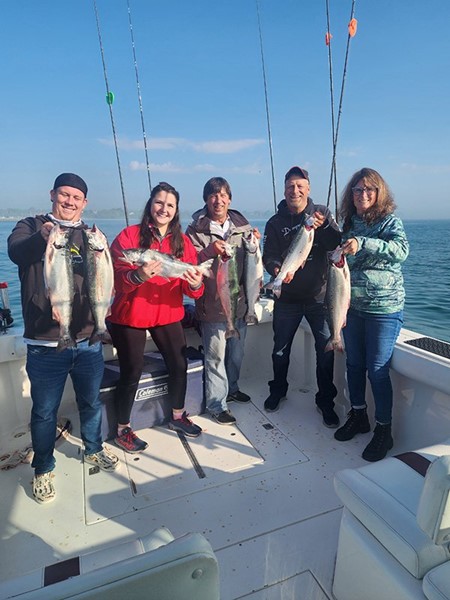Michigan DNR euthanizes Atlantic salmon infected with bacterial kidney disease
The 30,000-plus fish were a fraction of statewide fish production, stocking efforts
The Michigan Department of Natural Resources announced today that fisheries staff had to euthanize just over 31,000 Atlantic salmon that were sick with bacterial kidney disease, or BKD.
In early April, routine prestocking inspection of fish being reared at the Harrietta State Fish Hatchery, in Wexford County, found bacterial kidney disease was present. Staff at the Michigan State University Aquatic Animal Health Lab noted signs of active disease and confirmed the presence of Renibacterium salmoninarum, the bacterium that causes BKD.
BKD is a bacterial disease known to cause mortality in trout and salmon and is believed to be largely responsible for the decline in Great Lakes Chinook salmon populations in the mid-1980s.
A prescribed 28-day antibiotic treatment was completed May 17, but unfortunately, the treatment was not fully effective in eliminating the infection. Subsequent to completion of the antibiotic treatment, another group of fish was sent to the lab for analysis. During the analysis, internal signs of active disease were still noted.
“The bacteria that causes bacterial kidney disease is listed as a Level 1 restricted pathogen in the Model Program for Fish Health Management in the Great Lakes,” said Ed Eisch, DNR Fisheries Division Assistant Chief Ed Eisch. “Fish that are positive for Level 1 restricted pathogens can be stocked where the pathogen is already known to exist, but only if they are free of signs of disease. This lot of fish still shows signs of active BKD so they cannot be stocked.”
According to Aaron Switzer, DNR Fish Production Program manager, it isn’t overly surprising that this treatment was not fully successful.
“These fish were sick enough that a significant portion of the fish were not feeding well,” he said. “That means that the antibiotic, which was mixed in with their feed, was not being eaten at the rate necessary to eliminate the pathogen.”
The good news
The DNR stocks 20 million to 30 million fish annually into Michigan’s public waters, so there are still many quality fishing opportunities across the state for Michigan’s anglers.
Harrietta is not the only DNR hatchery that was rearing Atlantic salmon. The Platte River State Fish Hatchery, located approximately 15 miles west of Traverse City, also reared Atlantic salmon. The fish at Platte were healthy and were stocked in four locations:
- Torch Lake received 15,883 fish.
- The Au Sable River in Oscoda and the Thunder Bay River in Alpena each received 25,000 fish.
- Lake Huron’s Lexington Harbor received 40,000 fish.
Additionally, the St. Marys River at Sault Ste. Marie will be stocked this week with just under 27,000 fish.
“Having to make the decision to dispose of these diseased fish hurt, but it was clearly the right thing to do,” said Eisch. “The Atlantic salmon fishery is highly valued, but first and foremost, we have a public trust responsibility to protect the aquatic resources of the state of Michigan. Stocking fish known to be actively suffering a disease outbreak would be counter to that.”
Michigan’s hatchery system is currently undergoing infrastructure updates to address a large backlog of deferred maintenance needs that have accumulated over the years due to inadequate major maintenance funding. Some of those upgrades are aimed at improving biosecurity, which will reduce the likelihood of a similar issue in the future.
For more on fish and aquatic diseases, visit Michigan.gov/FishHealth. Learn more about the DNR’s fish production program and hatcheries and weirs at Michigan.gov/Hatcheries.
You may also like
-
Mad Scientist Tackle coats Ned Head Jig with brilliant UV coatings to achieve maximum radiance
-
Playing the Short Game
-
DNR Reminds Anglers To Report Any Catches Of Round Goby In Winnebago System
-
CAD IS THIS SATURDAY! One Day Only! In-Person and Online, June 21 at St. Croix Customer Appreciation Day!
-
This Week on Outdoors Radio with Dan Small Outdoors
